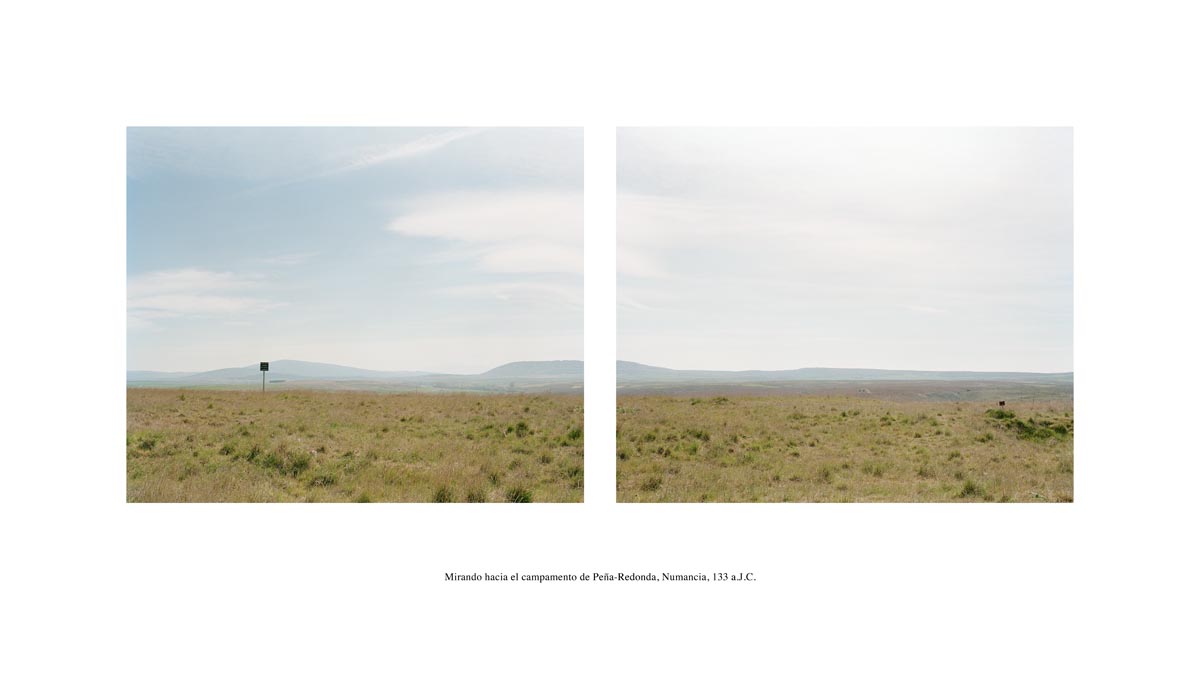Communication with the purpose of culturally promoting artists included in the Fundación María Cristina Masaveu Peterson Collection, works protected by intellectual property rights. Their total or partial reproduction or processing by any means, or their transmission or cession in any form is forbidden without the authorisation of the holder of the rights to the works
© Bleda y Rosa, VEGAP, Madrid 2024
Mirando hacia el campamento de Peña Redonda, Numancia, 133 a.J.C.
TECHNICAL DATA
Authors: Bleda and Rosa. María Bleda (Castellón, 1969) and José María Rosa (Albacete, 1970)
Title: Mirando hacia el campamento de Peña Redonda, Numancia, 133 A.J.C (Looking towards the camp of Peña Redonda, Numancia, 133 BC)
Year: 1995
Technique: C-print on aluminum
Size: 85 x 150 cm (diptych)
Edition: 6/10
The works carried out jointly by María Bleda and José María Rosa (Bleda and Rosa) usually start from beautiful landscapes, chosen as insinuating elements to propose a deep conceptual reflection about the passage of time. This work was acquired by the María Cristina Masaveu Peterson Foundation at Madrid’s International Contemporary Art Fair (ARCO) in 2009 and belongs to the series “Campos de Batalla. España” (Battlefields. Spain), one of the biggest award winners of this artistic pair, awarded National Photography Prize from the Ministry of Culture in 2008.
The representation of the land and the idea of travel are constant elements in their works, focussing here on historical episodes taking place on the Iberian Peninsula. It presents an austere and real landscape, located seven kilometres to the north of Soria (Spain), with two images taken in the supposed location of the camp of Peña Redonda, in the archaeological sites of the town of Numancia where as part of the Celtiberian War the town was laid siege to and destroyed by the Roman Empire.
The resistance put up by Numancia is a universal example of the struggle for freedom and has been used as a symbol throughout history, praised to the point of exaltation and with a universal dimension. The panoramic image sets the location for the event, along with the insertion of a legend at the foot of the photograph. A tremendously suggestive solution, where the idea of a space that has been the scene of bloody battles, with its historical importance, contrasts with the current image that is solitary and peaceful. An authentic emotional cartography, analysing the traces that a dramatic event has left on the nature, in the background, far from these stories.

